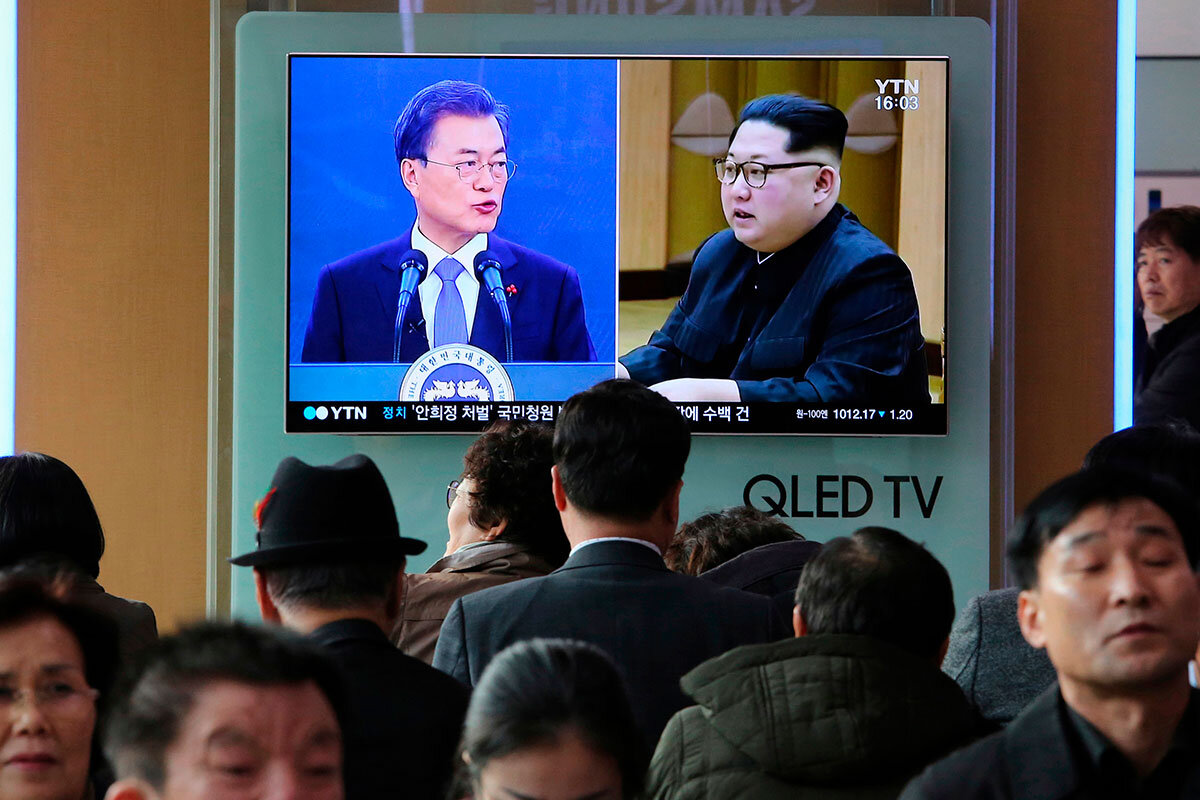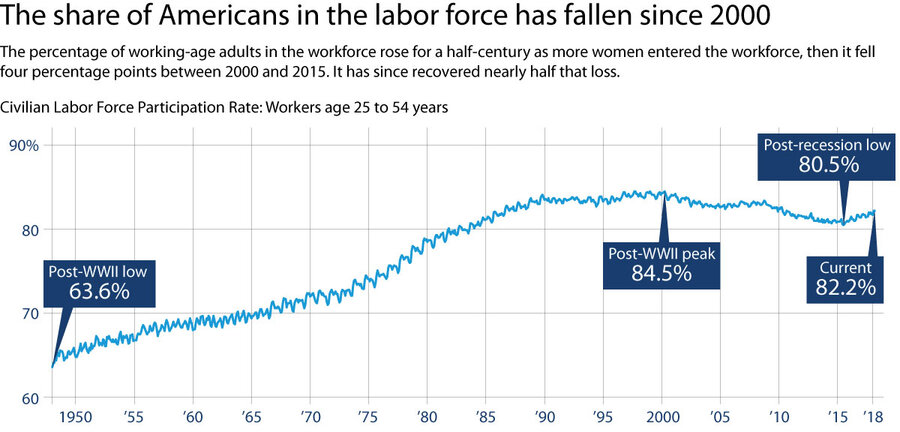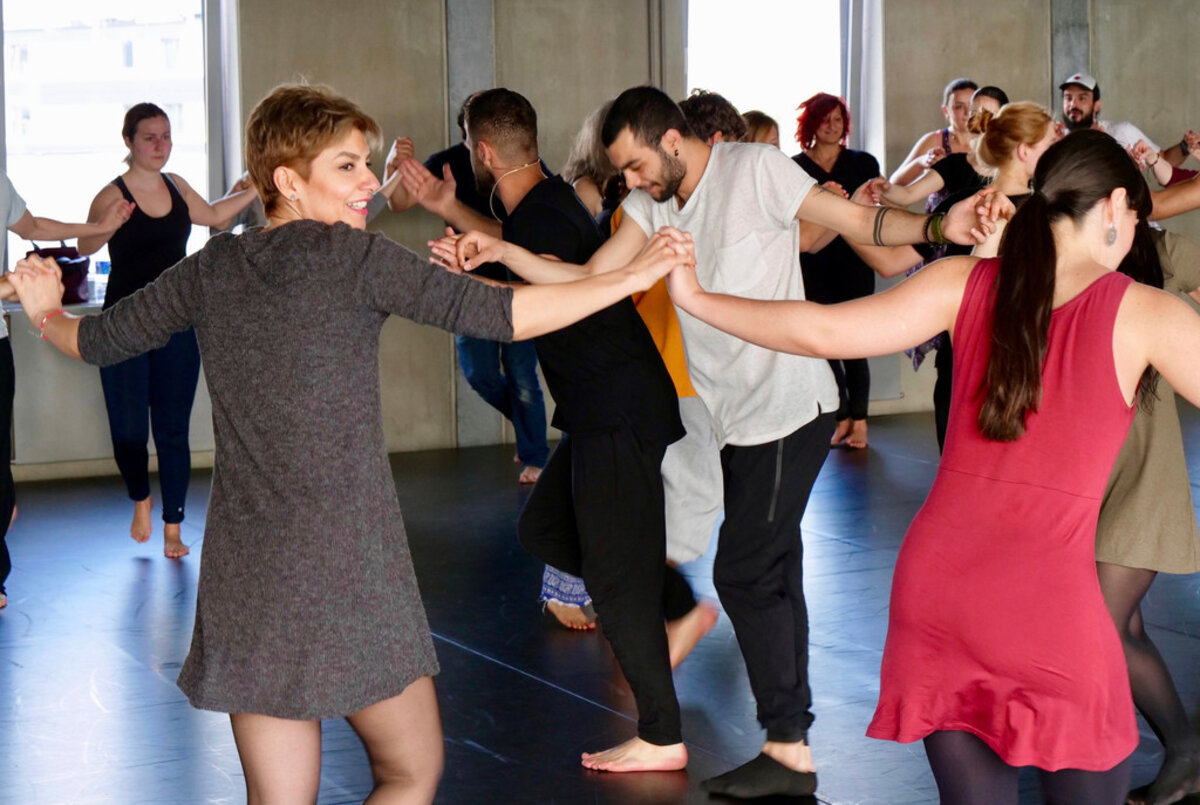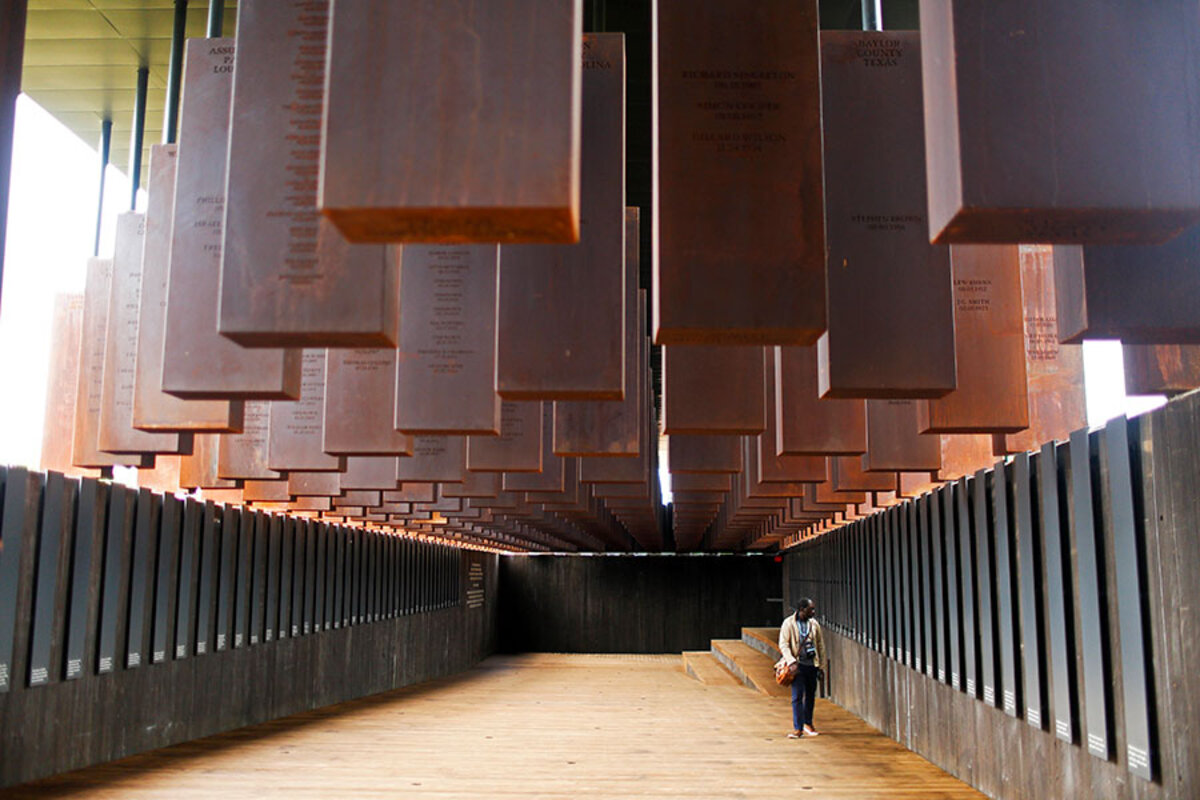At a much-scrutinized event Friday – where even the timing of the handshake has been negotiated in advance – a North Korean leader will sit down with his South Korean counterpart for only the third time in history. For South Korea's Moon Jae-in, the summit is a crucial chance to prove engagement doesn't mean appeasement.
Monitor Daily Podcast
- Follow us:
- Apple Podcasts
- Spotify
- RSS Feed
- Download
 Yvonne Zipp
Yvonne Zipp
When Americans talk about memorials in the South, they’re usually talking about Confederate statues.
Today, a new memorial is opening – one that those who have seen it say is unlike any that has come before.
In Montgomery, Ala., 800 rust-red blocks rise in the air. They are inscribed with the names of the more than 4,400 black Americans who were brutally murdered between 1877 and 1950 during a wave of racial terrorism that swept the South.
The lynching memorial honors the memories of the men, women, and children whose murders previously were not spoken of – their families terrorized into silence, the towns that perpetrated the crimes unwilling to talk about their past. One frequent inscription is “unknown.”
The National Memorial for Peace and Justice is modeled after the Holocaust Memorial in Berlin and the Apartheid Museum in Johannesburg, South Africa. It was created by the Equal Justice Initiative, whose director Bryan Stevenson has represented impoverished death-row inmates for decades and won a MacArthur award for his human rights work.
Mr. Stevenson, whose great-grandparents were enslaved, calls racism a pollution that infects the air we breathe. To cleanse the country, he says, it’s necessary to confront the truth. Only then can reconciliation come.
“In these communities where people actually cheered and celebrated while black people were burned and brutalized, you want people to recover, to repent,” he told The New York Times. “Not just because you want to see them on their knees, but because you know that on the other side of that there’s a kind of liberation. There’s a kind of redemption.” You can scroll down to catch a glimpse of his vision in our Viewfinder today.
Now to our five stories of the day, including the examination of the very different messages underlying mass protests in two countries.











